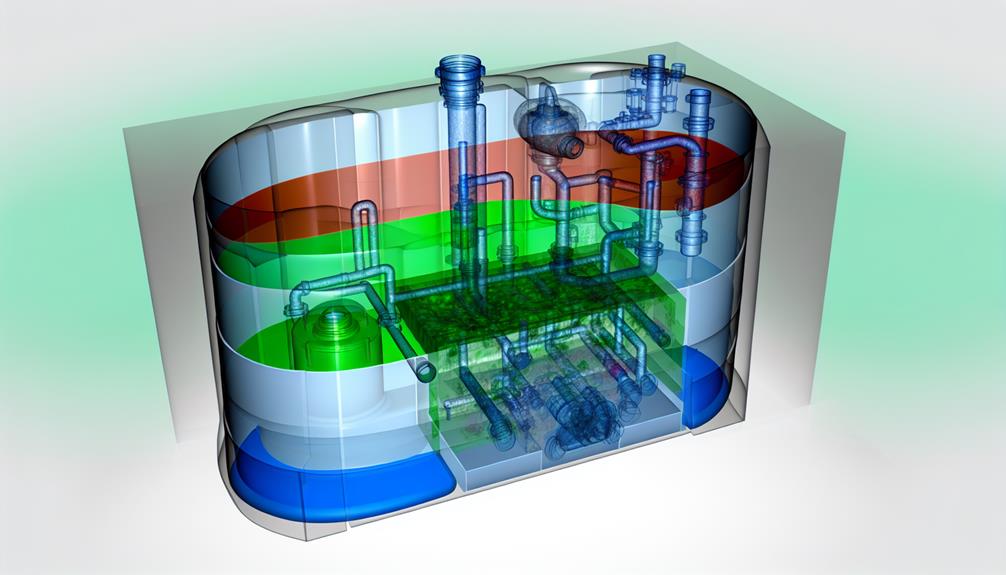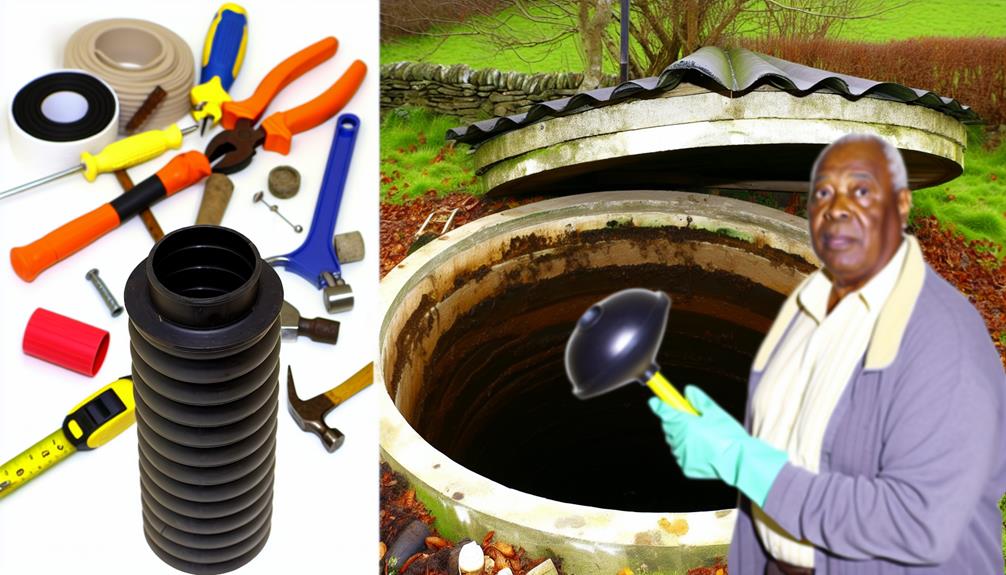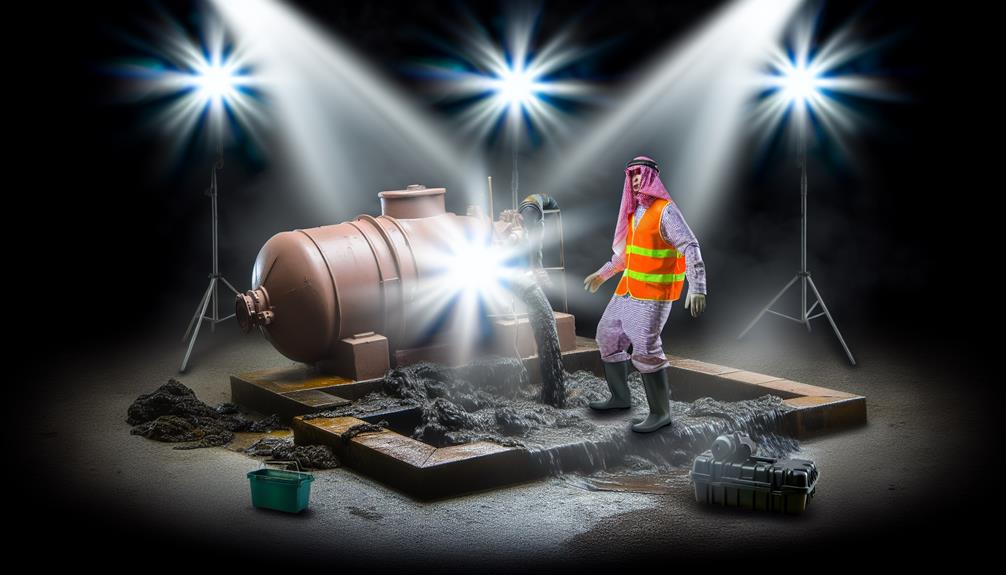Discover how to protect your septic system from breakdown with...
Read MoreYou & Your Septic Tank
How to Fix Common Septic Tank Pumping Problems
Our professional septic service team offers comprehensive septic tank pumping services to keep your system running smoothly. Get a FREE Quote Today.

How to Fix Common Septic Tank Pumping Problems
You’ve noticed the signs, smelled the odors, and seen the pooling water. These are all clear indications that you’re dealing with common septic tank pumping problems.
But don’t panic – you’re not alone, and there are ways to fix these issues. In the vast world of septic system maintenance, understanding the problem is half the battle, and finding the right solution can be simpler than you think.
Stick around to discover how you can navigate these murky waters and restore your septic system to its former glory.
Key Takeaways
- Finding the right pumping frequency based on tank size and household size is crucial for preventing clogs and backups.
- Disrupted bacteria balance, caused by household cleaners and antibacterial soaps, can hinder waste processing in the septic tank.
- Slow draining in fixtures, foul odors from drains or yard, and unusually green grass over the drain field can be signs of septic system issues.
- While DIY solutions can save time and money, seeking professional septic service is recommended for unusual noises, system overload, and malfunctioning pumps.
Understanding Septic Tank Pumping Problems

Before diving into solutions, it’s crucial to first understand the root of septic tank pumping problems and how they can disrupt your daily life. Most issues boil down to two main factors: pumping frequency and septic bacteria balance.
Firstly, you need to grasp the importance of pumping frequency. If you’re not pumping your septic tank often enough, waste can accumulate and lead to clogs or backups. On the flip side, pumping too frequently can be unnecessary and costly. So, finding the right balance, considering the size of your tank and the number of people in your household, is key.
Now, let’s talk about septic bacteria balance. Your tank relies on a healthy balance of bacteria to break down waste. When this balance is disrupted, it can lead to problems. Common culprits are household cleaners and antibacterial soaps that kill off good bacteria, disrupting the balance and hindering the tank’s ability to process waste.
In short, understanding your septic tank system and maintaining a regular pumping schedule and a balanced bacteria ecosystem are crucial steps in preventing septic tank pumping problems.
Identifying Common Septic System Issues
With a solid grasp of how septic tank pumping problems can arise, you’re better equipped to pinpoint common issues that might be plaguing your system. Understanding Septic System Basics will aid you in identifying and resolving these issues.
Firstly, watch out for slow draining in sinks, tubs, and toilets. This is often a sign that your septic tank is full or there’s a blockage in the drain field.
Secondly, an unpleasant odor emanating from your drains, or even your yard, is another telltale indicator of a septic system issue.
Lastly, lush, green grass over the drain field, especially during dry periods, might mean the septic tank isn’t processing waste correctly.
Recognizing these Warning Signs will allow you to address problems before they escalate:
- Slow draining in fixtures
- Foul odors around your property
- Unusually green grass over the drain field
DIY Solutions for Septic Tank Problems

You’ve identified your septic tank issues, now it’s time to tackle them head-on with some DIY solutions.
Don’t worry, you don’t need to be a professional plumber to implement effective repairs.
Let’s explore practical, step-by-step strategies you can apply to get your system back in working order.
Identifying Septic Tank Issues
While it’s no one’s favorite task, identifying septic tank issues early can save you a lot of time, money, and hassle down the line.
Key warning signs include:
- Tank Odors: A well-functioning septic tank shouldn’t smell. If you’re noticing a foul odor, it could be a sign of a problem.
- System Overflows: Puddles in your yard or a backed-up toilet could indicate your septic tank is overflowing.
- Slow Drains: If sinks or bathtubs are draining more slowly than usual, it might be a septic issue.
Implementing DIY Repair Solutions
So, how can you tackle these septic tank issues on your own? Start by troubleshooting errors. Investigate the tank, pipes, and drain field. If you notice any backflow, sluggish drains, or foul odors, there could be a blockage or disruption in your system.
Pump replacement might be the solution to your problem. It’s a complex task but doable if you’re handy. First, ensure the electricity is off for safety. Then, remove the old pump and take it to a home improvement store to find an identical replacement.
Professional Fixes for Pumping Issues
You’re now ready to explore the realm of professional fixes for septic tank pumping issues.
This section will help you understand how to identify these problems, the corrective measures that professionals take, and tips for preventive maintenance.
Identifying Pumping Issues
Let’s dive right into identifying common septic tank pumping issues and explore professional solutions to fix them.
Two main problems you’ll likely encounter involve pump functionality and system overload.
Now, recognizing these issues isn’t as complicated as you might think. Here are a few telltale signs:
- You might notice unusual noises from the pump, which suggests it’s struggling to function properly.
- Experiencing slow drainage or back-ups indicates a system overload.
- Unpleasant odors around your property could also hint at a malfunctioning pump.
Once you’ve identified these issues, don’t try to fix them yourself – you could end up causing more damage. Instead, reach out to a professional septic service. They’re equipped with the knowledge and tools to effectively address these problems, ensuring your system runs smoothly again.
Implementing Corrective Measures
Having identified the common septic tank pumping issues, it’s crucial to take the next step – implementing professional corrective measures to efficiently resolve these problems. These fixes aren’t just about patching up the symptoms; they’re about addressing the root causes to prevent recurrence.
Start by applying troubleshooting techniques. Is your pump not turning on, or is it working but not efficiently? Each issue requires a different approach. For instance, if the pump’s not turning on, it might be an electrical fault requiring an electrician’s expertise.
Where possible, opt for cost-effective remedies. If your pump’s impeller is clogged, rather than replacing the whole pump, it might be cheaper to clean it. However, don’t compromise on quality – it’s cheaper in the long run to fix things right the first time.
Preventive Maintenance Tips
To keep your septic system running smoothly and avoid costly repairs, it’s essential to follow a routine of preventive maintenance. Here are three practical tips:
- Inspection Schedule: Regular inspections are key. Ideally, you should get your septic tank inspected by a professional every 3-5 years. They’ll check for leaks, examine the scum and sludge layers, and ensure your system is in good working order.
- Tank Capacity: Know your tank’s capacity and schedule pumping accordingly. Most residential tanks need pumping every 3-5 years, but it can vary depending on usage.
- Proper Usage: Be mindful of what goes down your drains. Don’t flush non-biodegradable items or pour fats and oils down the sink.
Maintenance Tips to Prevent Problems
Regular maintenance of your septic tank can significantly reduce the likelihood of pumping problems, saving you potential headaches and costly repairs down the line. One of the essential tasks you shouldn’t overlook is tank cleaning. It’s crucial to clean your septic tank regularly to prevent the buildup of solid wastes that can clog the system. Make sure to schedule the cleaning every three to five years, depending on the size and usage of your tank.
Another important maintenance tip is system insulation. During colder months, the septic tank can freeze, causing significant problems. Insulation not only prevents freezing but also helps your system work more efficiently. You can insulate your tank by adding a thick layer of mulch, straw, or insulated blankets over it.
Emergency Septic Tank Problem Handling

In the face of an unexpected septic tank issue, it’s vital to know how to handle the situation promptly and effectively. Your emergency preparedness plan should include steps to prevent problem escalation, and reduce potential damage.
It’s important to:
- Identify the problem: Is there a foul odor or slow drainage? This could indicate a blockage or overflowing tank.
- Limit the use of water: This can prevent further flooding and potential damage.
- Contact a professional: They have the necessary equipment and skills to address the issue safely and effectively.
Conclusion
In the world of septic tank issues, you’re the knight and knowledge is your sword.
A little DIY can slay minor problems, but don’t hesitate to call in the cavalry for bigger beasts.
Regular maintenance is your shield, deflecting potential disasters.
But remember, even the best armor can fail.
So, when a septic emergency strikes, stay calm and act swiftly.
With this wisdom, you’re ready to conquer any septic tank challenge that dares cross your path.
You may also like...
Why Are DIY Fixes Essential for Septic Tank Pumping?
Tap into the importance of DIY fixes for septic tank...
Read MoreUnveiling the Average Costs of Septic Tank Pumping
Master the mysteries of septic tank pumping costs and avoid...
Read More
The Best Septic Tank Pumping Services Near You

Answer Some Questions
Let us know about your needs so we can find you the right septic tank pros.

Get Quotes
We will put you in touch with the right septic tank pros for your job and location.

Hire Right
Compare quotes, message or call pros, and hire only when ready.



